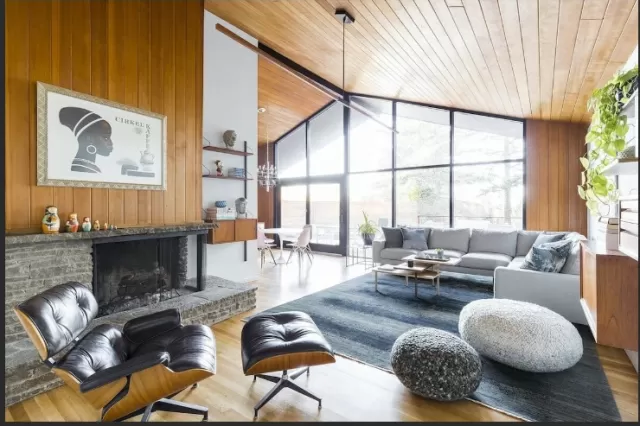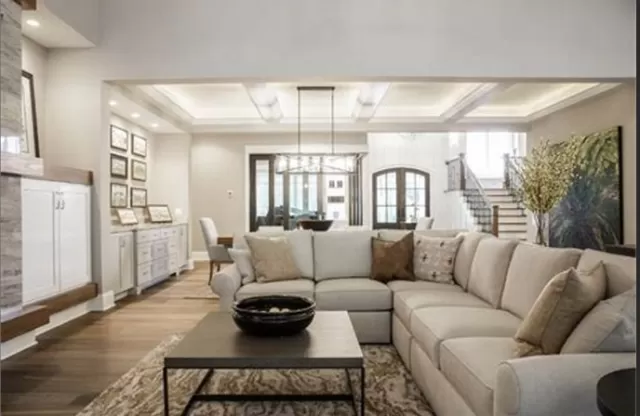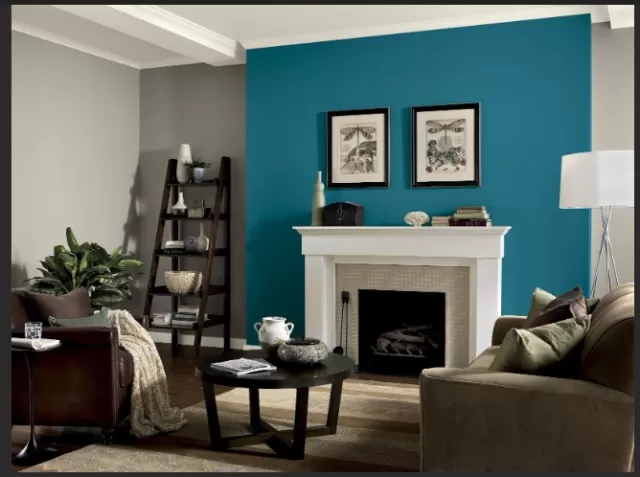Design Insiders Speak: Home Décor Trends Making Their Exit. The world of home décor is ever-changing, with trends that come and go, making it a challenge to stay current. While timeless elements like vintage furniture and marble finishes endure, what’s trendy today may fade tomorrow. Yet, engaging in the latest trends can be enjoyable, and the concept of “outdated” is subjective, varying with personal taste.
If a particular décor trend brings joy to your home, it’s worth embracing. Trends often cycle, and what’s considered outdated today might reclaim popularity in the future. Nevertheless, if you’re contemplating a Living Room overhaul, a bedroom refresh, or a kitchen revitalization, interior designers offer insights into passé home décor trends that you might consider leaving behind.
As you navigate the ever-evolving landscape of home design, the key is finding a balance between timeless elements and fleeting trends. What matters most is creating a space that resonates with your personal style and brings you comfort and joy. So, whether you choose to follow the latest trends or adhere to classic design principles, let your home be a reflection of your unique taste and a sanctuary where you feel truly at home.
Evolve Your Space: Transitioning from Pure Mid-Century Modern to Eclectic Fusion

While the clean lines, functional pieces, and bold accents of mid-century modern design remain timeless, a shift in approach is underway.
The era of a full commitment to the sleek, geometric mid-century look is making way for a more eclectic and blended aesthetic. According to Bethany Adams, principal of Bethany Adams Interiors, the key to contemporary design lies in the artful combination of high-quality, designer mid-century pieces with collectible items from present-day visionaries like Nada Debs or Dirk van der Kooij.
In this design evolution, the emphasis is on creating a curated and eclectic space that seamlessly weaves together elements from different eras and styles.
The juxtaposition of mid-century modern classics with contemporary collectibles adds depth and visual interest, resulting in a look that is both studied and diverse.
Picture a room where a vintage mid-century sofa coexists harmoniously with a sculptural contemporary coffee table, or where iconic mid-century chairs share the spotlight with avant-garde lighting fixtures.
This intentional blending allows for a personalized and dynamic design that transcends the limitations of a singular aesthetic.
As you embark on this design journey, consider the beauty of mixing and matching, where each piece tells a story and contributes to the overall narrative of your space.
Embrace the freedom to blend mid-century modern treasures with contemporary gems, creating an environment that is not only stylish but also rich in character and individuality. In the world of design, the future lies in the artful fusion of the old and the new—a celebration of the eclectic and the timeless.
Reimagining Space: The Shift Away from Open Floor Plans
In the evolving landscape of home design, the once-revered open floor plans are experiencing a shift in perception.
According to Bethany Adams, the allure of constant togetherness that characterized the peak of the pandemic has waned. The reality of working and learning from home has left many yearning for the cherished moments of solitude, where cooking a meal or reading a book could be enjoyed in peaceful seclusion.
As a response to this changing dynamic, open floor plans are giving way to a resurgence of walls and doors.
Adams suggests that the desire for a retreat from constant connectivity has sparked a newfound appreciation for delineated spaces. The trend embraces the idea that walls and doors provide a sense of privacy and tranquility, fostering opportunities for moments of solitude and introspection.
This shift aligns with the architectural characteristics of many historic homes, where rooms are compartmentalized, offering a variety of spaces for different activities.
In this design evolution, the emphasis is on creating environments that strike a balance between communal areas and private retreats, accommodating the varied needs of individuals and families.
As you contemplate the layout of your living spaces, consider the rejuvenation of walls and doors as elements that contribute to a sense of balance and flexibility.
Whether in a historic home or a modern abode, the reevaluation of open floor plans reflects a broader acknowledgment of the importance of spaces that honor both togetherness and solitude—a harmonious blend that resonates with the changing needs of contemporary living.
Farewell to All-White Everything: Embracing Texture, Patterns, and Vibrant Hues

The era of all-white interiors is gracefully giving way to a new design narrative, where neutral spaces are evolving into vibrant expressions of warmth and personality.
Designers are steering away from the clinical sterility of stark whites, opting instead for earthy textures, bold patterns, and bright accent colors that infuse life and character into living spaces.
Ashley Macuga, principal designer at Collected Interiors, notes the shifting preferences, emphasizing the desire for spaces that exude warmth and a lived-in feel.
Rooms dominated by shades of white can risk feeling cold and impractical, prompting a departure from the monochromatic trend. In its place, a celebration of color and pattern emerges, injecting vitality into interiors and creating an atmosphere that beckons families and guests to linger and enjoy the surroundings.
The renewed focus on texture introduces a tactile dimension that elevates the sensory experience of a room.
From plush textiles to natural materials, the interplay of textures adds depth and visual interest, transforming spaces into inviting sanctuaries. The incorporation of bold patterns and vibrant hues further amplifies the energy of a room, turning it into a dynamic and lively environment.
As you contemplate the design of your living spaces, consider the departure from all-white everything in favor of a more eclectic and vibrant palette.
Embrace the warmth and practicality that texture, color, and pattern bring, inviting a sense of energy and personality into your home. In this evolving design landscape, the allure lies in creating spaces that not only look beautiful but also feel inviting and exude a comforting sense of individuality.
Rethinking Furniture Choices: The Rise of Sustainable Alternatives and Upcycling
In the realm of furniture buying, a noticeable shift is occurring as more consumers veer away from mass-produced pieces in favor of sustainable alternatives.
The trend towards upcycling, thrifting, and do-it-yourself (DIY) projects is gaining momentum, reflecting a desire for unique, environmentally conscious options.
While fast furniture remains a convenient choice for some, a growing number of buyers are exploring sustainable avenues.
This includes the allure of second-hand vintage pieces, with platforms like 1stDibs or Chairish becoming go-to sources for distinctive finds. Additionally, the practice of repurposing old furniture is gaining popularity, as individuals with a discerning eye, a bit of elbow grease, and a few tools breathe new life into pre-loved pieces.
Matt Podesta, co-founder and creative director of Huckleberry Home, observes this shift and predicts that the upcycling trend is here to stay.
The movement towards repurposing and giving a second life to furniture aligns with a commitment to sustainability and a rejection of disposable consumer culture.
As you consider your furniture choices, think beyond the mass-produced options and explore the world of second-hand treasures and upcycling projects.
With a bit of creativity and effort, you can not only furnish your space with unique and character-filled pieces but also contribute to a more sustainable approach to home decor. The growing preference for sustainable alternatives signals a positive direction in the world of furniture design, where each piece tells a story and embraces the principles of environmental responsibility.
Farewell to Accent Walls: Embracing Bold and Cohesive Design

Once a go-to strategy for injecting color or texture into a space without a full commitment, accent walls surged in popularity during the reign of the modern farmhouse style.
However, as design preferences evolve towards more daring and cohesive aesthetics, the era of accent walls is gradually fading. According to Avery Cox, principal designer and founder of Avery Cox Design, designers are moving away from the simplicity of accent walls in favor of more impactful and intentional design choices.
Cox advocates for a departure from the concept of accent walls and encourages the exploration of bolder approaches.
Instead of limiting design impact to a single wall, she suggests embracing the use of wallpaper throughout an entire room or painting all walls and the ceiling in the same color. This approach, Cox notes, achieves a more intentional sense of depth that accent walls often fail to deliver.
In this new design landscape, the emphasis is on creating spaces that feel cohesive and purposeful.
By extending color and texture across all surfaces, rooms gain a transformative depth and a more immersive visual experience. The shift away from accent walls reflects a desire for a holistic and intentional design that goes beyond fragmented statements.
As you contemplate your design choices, consider the departure from accent walls and explore the possibilities of embracing a unified color or texture scheme throughout your space.
Let your walls become canvases that contribute to a seamless and intentional design narrative, ushering in a new era of bold and cohesive interiors.
*The information is for reference only.